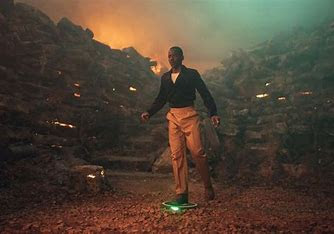Celebrating the greatest show in the galaxy's 60th birthday, with a run-down of every TV story from all eras worst to best across 315 days up until the anniversary on November 23rd 2023 for all new fans arriving from the 'Whoniverse' on BBC i-player. Remember, a Dr Who story a day keeps the entropy away! Sister site to music review site 'Alan's Album Archives' (www.alansalbumarchives.blogspot.com) and sci-fi book series 'Kindred Spirits' (www.kindredspiritbooks.blogspot.com)

Subscribe to:
Post Comments (Atom)
Wish World/The Reality War - Ranking n/a (but #295ish)
"Wish World/The Reality War” (15 th Dr, 2025) ( Series 15/2A serial 7, Dr 15 with Belinda, 24-31/5/2025, showrunner: Russell T D...

-
"Wish World/The Reality War” (15 th Dr, 2025) ( Series 15/2A serial 7, Dr 15 with Belinda, 24-31/5/2025, showrunner: Russell T D...
-
"The Story and The Engine” (15 th Dr, 2025) ( Series 15/2A episode 5, Dr 15 with Belinda, 10/5/2025, showrunner: Russell T Dav...
-
"The Well” (15 th Dr, 2025) ( Series 15/2A episode 3, Dr 15 with Belinda, 26/4/2025, showrunner: Russell T Davies, writers: Russ...


No comments:
Post a Comment